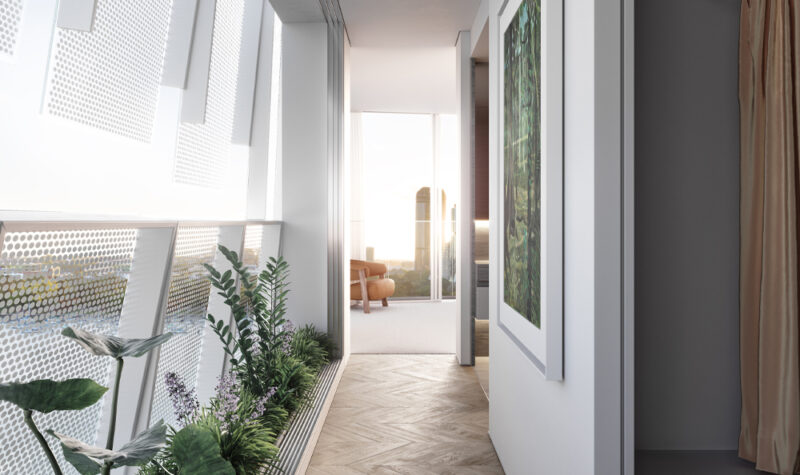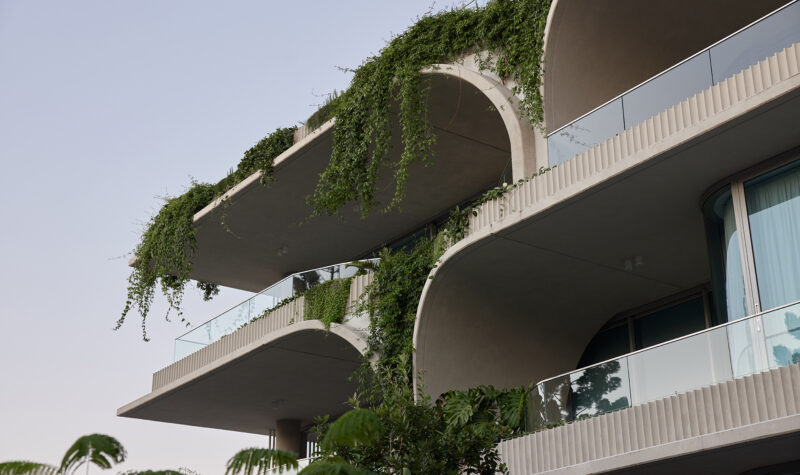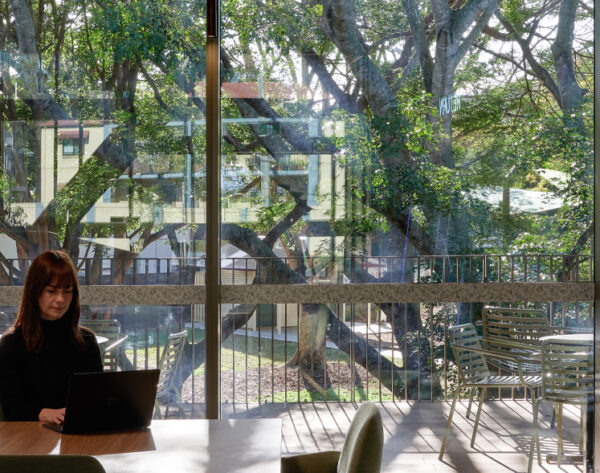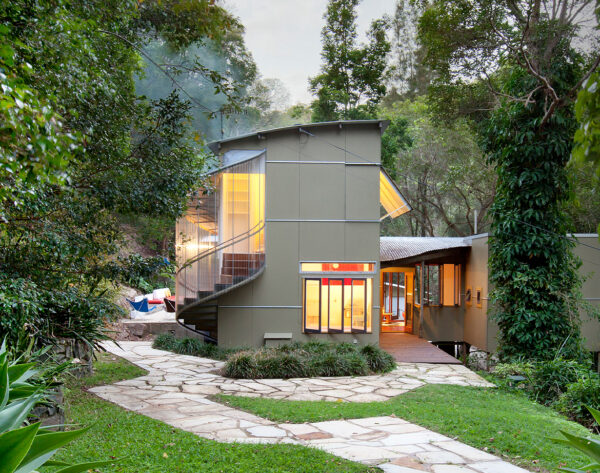Good design is transforming Brisbane’s subtropical apartment living
Brisbane’s skyline has transformed, with design taking centre stage as more people choose apartment living over the traditional suburban house.
Architects, along with developers, say good design is driving this change, making apartment living more desirable and priming the identity of our future city.
According to Liam Proberts, Creative Director of Brisbane-based architecture practice bureau^proberts, apartment living has become a crucial part of the city’s identity and growth.
“We’re seeing a major social shift in Brisbane,” Liam says. “Medium-density living is no longer a niche, it’s become the gold standard and the aspiration. People are now choosing apartments over standalone homes for their great design, location and lifestyle benefits, which is dramatically changing the urban fabric of our city.”
The demand for well-designed apartments is reshaping some of Brisbane’s inner-ring suburbs. Projects like Canvas in Bulimba, The Oxlade in New Farm and Thornton in Kangaroo Point, designed by bureau^proberts, highlight this trend. These developments have replaced traditional single-family homes with thoughtfully designed apartments that appeal to a wide demographic – from young professionals to retirees seeking convenience and a strong sense of community.
With Brisbane rapidly urbanising, medium and high-density living is becoming a vital part of its future growth. The city’s population is expected to grow by approximately 40 per cent by 2046, and apartment living will play a key role in accommodating this influx.
“Brisbane is transforming from a sprawling, suburban city to a more diverse and dense urban environment,” says Liam.
“This is a significant and very healthy shift for our city, and it’s happening because people are seeing the advantages of apartment living – which now combines great design with a great lifestyle and sustainability.”
This shift in medium-density living is not unique to Brisbane; it mirrors historical transformations in other major cities.
“You can draw parallels to London’s terrace houses in the 1800s, when the gentry moved into the city and vertical living became the new norm,” Liam says. “We’re seeing a similar trend in Brisbane, where apartment living is no longer just about affordability – it’s about lifestyle choice, location and quality design.
“We are redefining apartment living in South-East Queensland as we move from a mostly detached house town to a more sub-tropical urban city where diversity of housing product is so important. We’re creating density, diversity and options for living through design.”
Urbis Director of Planning Ben Lyons is tracking this trend closely, and says the shift is influencing the city’s urban patterns.
“Residents are valuing convenience, lifestyle and wellbeing a lot higher than they used to,” he says. “Such that more are choosing to no longer spend 45 minutes driving home from the CBD through traffic – they’d much rather have that time back in their life to go for a walk, spend time with family and are choosing to live in the inner city because time is precious.”
He says a number of factors have created a demand for apartments that are designed to the highest standards, such as population growth, the impending Brisbane 2032 Games and council planning initiatives like the New World City – Buildings that Breathe Design Guide.
“The Buildings that Breathe Design Guide has been really powerful in helping to drive a more distinct identity for Brisbane through sub-tropical design, whilst also improving the quality and amenity of higher density living. What we’ve seen through the success of the implementation of that guideline is that the previously ‘nice to haves’ of good design have now become the expectation at all levels of the market.”
Liam says thoughtful planning plays a major role in Brisbane’s future.
“It has been encouraging to see our authorities and planning instruments support a shift to this diversity of housing,” Liam says. “It would be great to extend this to infill housing and townhomes, particularly in Brisbane’s suburban realms, whilst protecting our heritage.”
Brisbane’s sub-tropical climate makes it particularly suited to this shift. Apartments in the city’s inner and middle suburbs are increasingly designed to embrace outdoor living, natural ventilation, and a strong connection to the landscape.
Liam explains that architecture enhances the experience of apartment living.
“We’re designing homes that connect people to their surroundings,” he says. “These are not just apartments – they’re spaces that offer the qualities of a family home but with the added benefits of location and community.”
One of the key drivers of this change is the appeal of living in well-designed apartments in prime locations. Canvas in Bulimba, for instance, replaces two warehouses with 21 apartments, creating a new version of the traditional six-pack units that were once common in Brisbane’s middle-ring suburbs. Meanwhile, Thornton in Kangaroo Point maintained the heritage-listed former Water Police Residence on site, while adding 14 new residences above it.
Liam says projects like these show how medium-density living can elevate the standard of living in Brisbane’s suburbs.
“People are choosing these homes because they offer a higher quality of life without sacrificing the connection to community and place,” he says.
“We’re entering a new era for Brisbane.
“The way people are choosing to live is changing, and medium-density developments are at the heart of that transformation. These apartments are not just about fitting more people into the city – they’re about offering a new way of living that reflects Brisbane’s future as a vibrant, connected, and diverse urban centre.”




